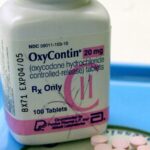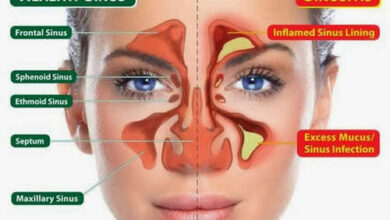10 Signs & Symptoms of Xanax Addiction

What is Xanax?
Xanax is the brand name for Pfizer’s brand of Alprazolam, a short-acting tranquilizer of the triazolobenzodiazepine class, which are benzodiazepines fused with a triazole ring that acts on the brain and nerves to produce a calming effect. It works by enhancing the effects of a certain natural chemical in the body known as Gamma amino-butyric acid (GABA).
It is used to treat anxiety disorders and anxiety caused by depression. Xanax is also used to treat panic disorders with or without a fear of places and situations that might cause panic, helplessness, or embarrassment (agoraphobia).
How Does Xanax work?
Xanax works by decreasing abnormal excitement in the brain. The Food and Drug Administration (FDA) approved it in October 1981. Benzodiazepines act on the brain and central nervous system (CNS) to produce a calming effect. Xanax is a federally controlled substance (C-IV) because it can be abused or lead to dependence. Keep this medicine in a safe place to prevent misuse and abuse. Selling or giving away Xanax may harm others, and is against the law. Tell your healthcare provider if you have abused or been dependent on alcohol, prescription medicines, or street drugs.
Xanax Abuse
Many people who take Xanax recreationally, or without a prescription, describe the feeling as sedating or calming. Unlike some drugs like cocaine which produce a “high” or euphoric feeling, Xanax users describe feeling more relaxed, quiet, and tired. These feelings may lead to falling asleep or passing out for a few hours.
Although benzodiazepines (Xanax) are effective in a wide range of medical and psychiatric conditions, caution must be exercised with their use, particularly when these agents are prescribed to patients with an active or remote history of substance abuse or addiction.
Benzodiazepines which include Xanax are rarely the preferred or sole drug of abuse. An estimated 80 percent of benzodiazepine abuse is part of polydrug abuse, most commonly with opioids. As potential drugs of abuse, short-acting benzodiazepines seem to be preferred among addicts because of the rapidity of their onset of action.
What are the signs and symptoms of Xanax abuse?
According to Healthline, there are some common signs of addiction, regardless of the substance used. General warning signs that you may have an addiction include the following:
- There’s an urge or craving to use that’s so intense it’s difficult to focus on anything else.
- Needing to use more of the drug to achieve the same “high” (tolerance).
- Taking more and more of the drug or taking the drug for longer periods of time than intended.
- Spending a lot of time obtaining the drug, using it, and recovering from its effects.
- Continuing to use even though use affects your ability to fulfill duties at work, school, or home.
- Continuing to use despite it causing social or interpersonal problems.
- Giving up important activities or hobbies to use.
- Using recurrently in harm-promoting situations.
- Continuing to use despite it causing physical or psychological problems.
- Lacking the ability to stop using the drug without the assistance of professional intervention.
- Experiencing symptoms of withdrawal once you stop using the drug.
Side Effects of Xanax
The following side effects have been reported by at least 1% of people taking this Xanax pill. Many of these side effects can be managed, and some may go away on their own over time.
Contact your doctor if you experience these side effects and they are severe or bothersome. Your pharmacist may be able to advise you on managing side effects.
• blurred vision or other changes in vision
• changes in sexual desire or ability
• clumsiness or unsteadiness
• constipation
• dizziness or lightheadedness
• drowsiness
• false sense of well-being
• increased appetite
• problems with urination
• unusual tiredness
• weight changes
Although most of these side effects listed below don’t happen very often, they could lead to serious problems if you do not seek medical attention.
Check with your doctor as soon as possible if any of the following side effects occur:
• abnormal thinking (e.g., disorientation, delusions, or loss of sense of reality)
• agitation
• anxiety
• behavior changes (e.g., aggressive behavior, bizarre behavior, decreased inhibition, or outbursts of anger)
• confusion
• increased risk of falls (particularly for seniors)
• loss of recent memory
• signs of depression (e.g., poor concentration, changes in weight, changes in sleep, decreased interest in activities, thoughts of suicide)
• signs of liver problems (e.g., nausea, vomiting, diarrhea, loss of appetite, weight loss, yellowing of the skin or whites of the eyes, dark urine, pale stools)
• slurred speech
• symptoms of mania (e.g., decreased need for sleep, elevated or irritable mood, racing thoughts)
• trouble sleeping
Stop taking the medication and seek immediate medical attention if any of the following occur:
• signs of a serious allergic reaction (e.g., abdominal cramps, difficulty breathing, nausea and vomiting, or swelling of the face and throat)
• signs of a severe skin reaction such as blistering, peeling, a rash covering a large area of the body, a rash that spreads quickly, or a rash combined with fever or discomfort
• signs of increased pressure in the eyes (e.g., sudden severe eye pain, changes in side vision, decreased or cloudy vision, seeing halos around lights, swollen eyes)
Some people may experience side effects other than those listed. Check with your doctor if you notice any symptom that worries you while you are taking this medication.





